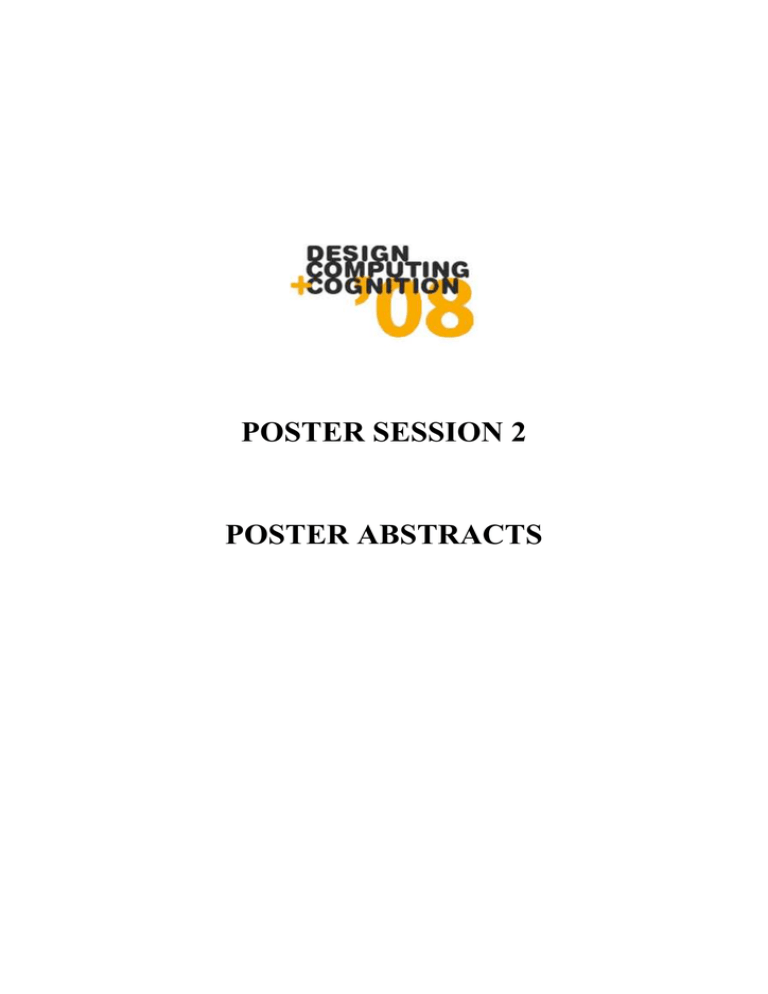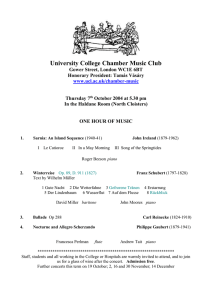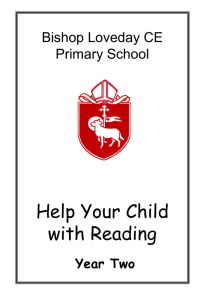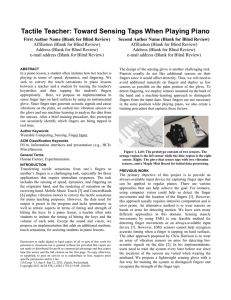POSTER SESSION 2 POSTER ABSTRACTS
advertisement

POSTER SESSION 2 POSTER ABSTRACTS Estimation in Engineering Design .................................................................. 1 Sebastian Adolphy, Kilian gericke, Luciënne Blessing How Architecture Overlooks Orientation Issues ............................................ 3 Martin Brösamle, Christoph Hölscher Parametric Modeling of Masonry Assemblies................................................ 5 A. Cavieres, R. Gentry A Framework to Understand Project Robustness ........................................... 7 Kilian Gericke, Luciënne Blessing Neural Model to Promote Novel Design ...................................................... 11 Hou Yuemin, Ji Linhong SmartHands................................................................................................... 13 Kevin Huang, Ellen Yi-Luen Do A Neurological Agent Model for Requirements Specification in Structural Engineering Design....................................................................................... 15 Florin Leon, Yeoh Ker-Wei, Martinus Van De Ruitenbeek Knowledge Based Design and Digital Manufacturing: ................................ 17 Eduardo R. Lyon Methodology For the Production of a Web-Based Image Collection for Car Designers....................................................................................................... 19 J. F. Ohmhover, C. Bouchard, C. Mougenot, F. Mantelet, D. Ziakovic, A. Aoussat A Qualitative Performance Model for the BIM Adoption in the AEC/FM Industry ......................................................................................................... 21 Ozan Onder Ozener, Carlos A. Nome, Mark J. Clayton, Robert E. Johnson Augmenting Constructability Evaluation of CAD/CAM Projects Using Systems Theory............................................................................................. 23 Dimitris Papanikolaou AUTOCAD Implementation of Shape Grammars........................................ 25 Fabiano Pinto, Rosirene Mayer, Benamy Turkienicz Development of an Intelligent Knowledge Based Design System for Advanced Fixture and Tooling Design .................................................... 27 N. J. Reed, J. P. Scanlan, S. T. Halliday Computationally Creative Search for Stories ............................................... 29 Mark O. Riedl A Process Integration Platform..................................................................... 31 SMARTHANDS A Multi-Modal Haptic Piano Teaching System KEVIN HUANG, ELLEN YI-LUEN DO Georgia Institute of Technology, USA 1. Introduction This project presents a piano teaching system called SmartHands. SmartHands system includes two distinct modules that can be used together or separately: (1) haptic feedback module: where a vibration node is placed on the back of each finger of the player and synced with audio and visual cues, (2) virtual keyboard playback module: in which a phrase of music is played with audio outputs and the keys on a virtual keyboard light up accordingly on a visual display. 2. System Design and Rationale The vibration nodes give a sense of touch so that as the notes are played in the demonstration, the user can feel the fingers that are used. The synchronized tactile sensations on the fingers would not only provide intuitive sense of finger selection (i.e. “which fingers are used for which notes”), crucial for proper piano playing (Hoffman, 1976), but would also reinforce the structure of the phrase (notes, rhythm and volume). The volume of each note is encoded and expressed as degree of sensation. Overall, the multi-modal approach of combining audio, visual, and haptic cues would allow the learner of a song to immediately have a richer understanding of the musical phrase (Grindlay, 2007). This multi-modal design may help the learner to play the songs more correctly, efficiently, and in significantly less time. This portable, wireless device has a main component in the form of a wristband to house the battery, Bluetooth hardware, and a set of retracted, small, vibration nodes. A user can pull out the nodes and place them anywhere on the hand (the back of finger would be least obtrusive in a piano learning session). The Bluetooth connection synchronizes with a computing device such as a cell phone, mp3 player, laptop or desktop. The convenient and unobtrusive nature of this device would allow users to play the 14 KEVIN HUANG, ELLEN YI-LUEN DO instrument unencumbered. One can also use SmartHands for pure enjoyment. The user can relax, hear and feel Beethoven’s Moonlight Sonata on his/her fingers, while being unhindered to do any normal activity such as typing or making a cup of tea. The haptic sensations can give an added dimension to the appreciation of the musical piece. Figure 1 shows a use scenario of Smart Hands. Figure 1. Feeling the music with virtual keyboard and vibration nodes. 3. Discussion and Future Work SmartHands device can also be used for many other applications. A guitar learner, for example, can use SmartHands to directly feel which fingers are being used on the left hand, and how they’re coordinated with the right hand (upstroke, downstroke, finger picking), while listening and watching a musical piece. Another possible application for this system is hand rehabilitation. The device can encourage hand usage, and as well as increase sensory input into the disabled hand. The combination of increased sensory input, mental focus on the fingers, and manual exercises may speed up the healing process. An evaluation is under design to examine the effects of this device on hand rehabilitation. References Hofmann, J: 1976, Piano Playing, with Piano Questions Answered, Courier Dover Publication. Grindlay, GC: 2007, The Impact of Haptic Guidance on Musical Motor Learning, Masters Thesis, Massachusetts Institute of Technology.





